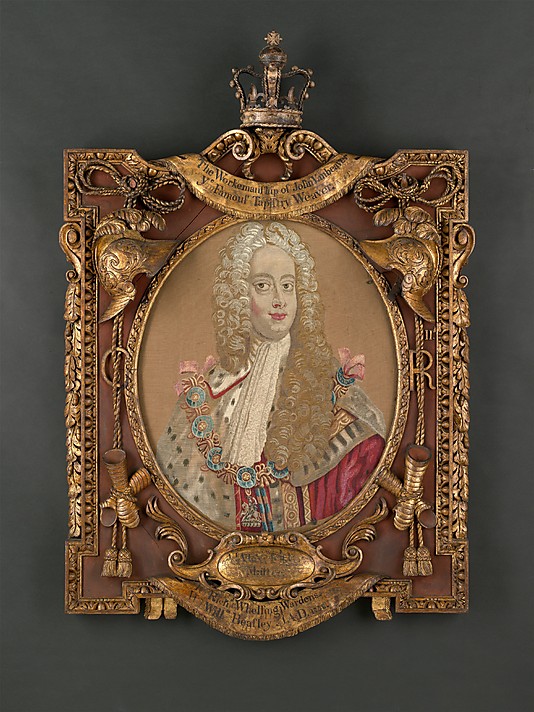George II.
Bronze Statue.
Formerly on Weavers Hall, The Coombe, Dublin.
1750.
Attributed to John van Nost III.
Some have suggested that it was by Benjamin Rackstrow.
The Weavers Hall Architect was almost certainly Joseph Jarret of Dublin, 1747.
The figure of George, holding shuttles and other implements relating to the weaving trade, was removed and destroyed in November 1937 - it was feared by the owners of the building that the IRA might attempt to blow it up.
The
Irish Times (17 November 1937) covered the story as follows:
STATUE
OF KING HACKED TO PIECES.
“BETTER
TO HAVE IT BLOWN UP”.
What is
described as “the last British King in the City of Dublin” was beheaded in
Dublin yesterday morning. Immediately afterwards men set about the task of hacking
off his legs and arms. This was the fate which met the bronze statue of King George
II, which has stood over the entrance of the Weavers’ Hall, in the Coombe,
since 1750,
and the reason is that the present owners of the premises, Messrs S. Fine and
Co., Ltd.,
thought it better to have the statue peacefully removed than to have it blown
up.
An Irish
Times reporter was told that it had been necessary to dismember the statue
in order to take it down without damaging the face of the building. It was
fitted into the
front of the house with iron stays, and to have removed it en bloc would have defaced
the masonry. Some idea of the weight of the statue may be gathered from the fact
that the head alone weighs almost 50lb.
This is probably rather disingenuous - it was probably much easier to hack it apart and then sell it for scrap rather than hire a crane and remove it carefully - a great loss..
Fine and Co were house furnishers but a watercolour by Flora Mitchell painted in the 1950's shows a very down at heel building.
There are photographs of it in its final stages of disintegration before it was demolished in the Irish Architectural Archive on Merrion Square, Dublin which I hope to publish shortly.
Weavers Hall itself was finally demolished in 1965.
During
the seventeenth century a number of French Huguenot weavers arrived in Dublin.
They settled manly in the Liberties area of Dublin, west of St. Patrick’s
Cathedral, where they became part of the existing weaving fraternity. Many of
them were experienced silk weavers and their expertise contributed to the
establishment of a thriving silk and poplin industry.
A
weavers’ hall had been built by the Guild in the Lower Coombe in 1682 and by
1745, when the building of a new hall was required, it was a Huguenot, David
Digges La Touche, who advanced the £200 needed. The main room of the new hall
is described as being fifty-six feet long by twenty-one feet wide, wainscoted,
and hung with portraits of kings and notabilities, and included a tapestry portrait of
King George II, woven by John van Beaver (see below).
John Van Nost III in, or shortly before, 1750 came
to Dublin. In that year he
executed the first of the many important works which he did in Ireland, a
"Statue of King George II" for the Guild of Weavers. It was placed in
an arched niche over the door of the Weavers' Hall in the Coombe, and was exposed to public view on the anniversary of the Battle of
the Boyne, "when the covering was taken off," says "Faulkner's
Journal," "in the sight of many spectators, who all expressed their
satisfaction thereat by the loudest acclamations and demonstrations of
joy."
Early 20th Century photograph of Weavers Hall, on Lower Coombe, Dublin.
Showing the statue of George II.
Image South Dublin Library.
The
tapestry of George II woven by John van Beaver, which hung in the Weavers’
Hall, is now in the Metropolitan Museum of New York.
............................
David Digges la Touche.
John van Nost III.
Huntington Library Art Collection.
Several other 18th Century busts are in the Huntington Collection.
Oliver Cromwell - Michael Rysbrack.
John Hamden - Michael Rysbrack.
Sir Peter Warren - L.F. Roubiliac.
Handel Plaster - Roubiliac.
Philip Stanhope 4th Earl Chesterfield - Scheemakers.




No comments:
Post a Comment